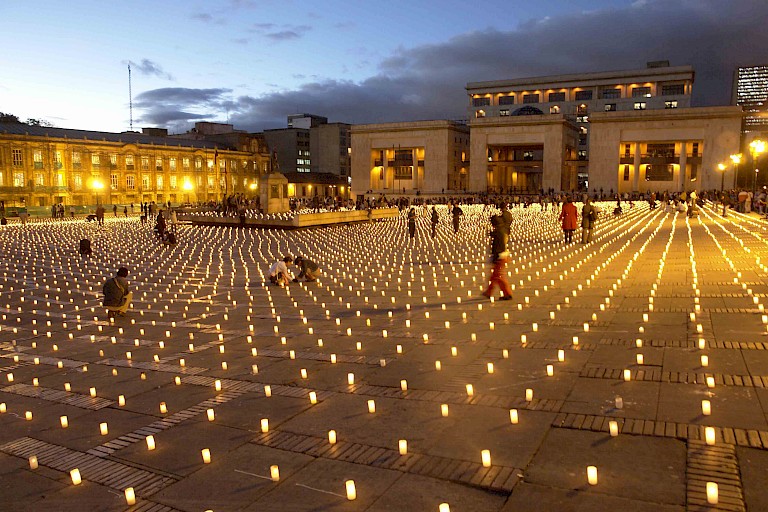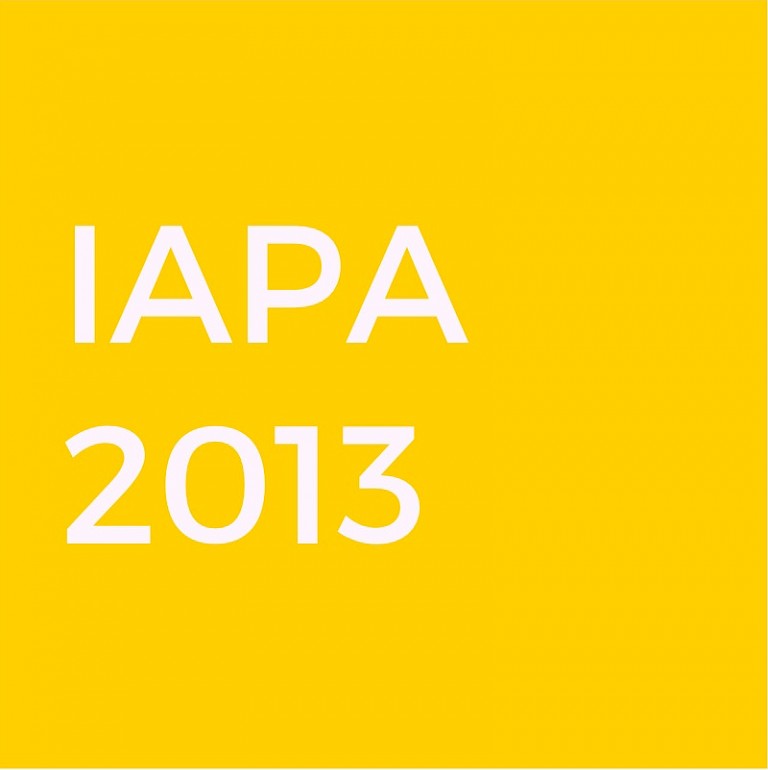



The FARC used political kidnappings in an effort to pressure the Colombian government: they would release kidnapees in exchange for imprisoned guerrillas. Until this point the government had been opposed to this tactic. After holding the representatives in the jungle, the guerrillas thought they were being attacked by army forces; the FARC reacted by killing 11 of the 12 representatives they had sequestered five years prior.
Upon hearing this news, Doris Salcedo took to the center of Bogotá accompanied volunteers and quietly lit candles one by one until 25,000 of them covered Plaza de Bolívar. “Memory is the essence of my work,” Doris says. “If we don’t know our past, there is no way we can live the present properly and there no way we can face the future.” This piece was an act of mourning that created a space where people could remember the deceased representatives.
Doris uses her experience as an “other from the ‘wrong’ place” to express her interpretation of political events in Colombia through her work. She is critical of her role as an artist: “I don’t think art can solve problems. I’m not doing anything for these families; I’m not doing anything for these victims. That’s a reality we have to face when we talk about this type of art that’s trying to address political issues. Art does not have the ability to redeem.”
The act of filling Plaza de Bolívar with candles silently honored Colombia, a country that constantly mourns—oftentimes grieving death without bodies. “If you want to dignify a human life then you have to come back to beauty,” Doris says, “That’s where we find dignity and almost turn [it] into a sacred space.” Plaza de Bolívar is flanked on three sides by historic government buildings rising high above the square where politicians make high level decisions. The candles, small and quiet, reminded them of the work they have failed to do.
All copyright belongs to Shanghai Academy of Fine Arts, Shanghai University.



